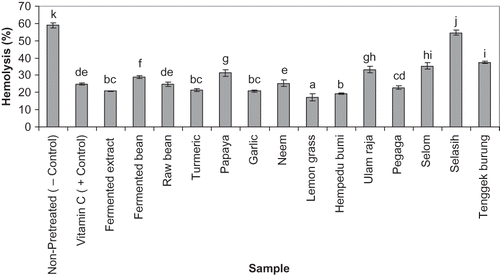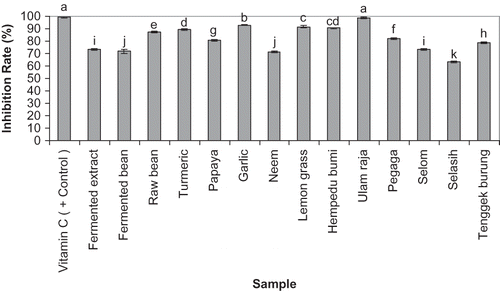Figures & data
Table 1 Selected plants and the parts used in this study
Table 2 Dried raw bean and fermented bean used in the study
Figure 1 Hemolysis of rabbit erythrocytes is expressed as percentage values. The inhibition of hemolysis given in the vertical axis is attributed to pretreatment with 10 mg of ethanolic extract from each of the samples. Vitamin C (10 mg) was used as the positive control and while non-pretreated erythrocytes were used as the negative control. Changes between the samples were analyzed by one-way ANOVA followed by Duncan's Multiple Comparison Test. Sample represented with different letters are significantly different (p < 0.05). Each determination was performed in triplicates.

Figure 2 Neutralization of DPPH radical of plant and fermented extracts samples (50 μl of a stock solution of 10 mg ethanolic extract per ml of PBS) in the free radical scavenging activity assay. BHT (10 mg/ml) was applied as the positive control. Determinations were performed in triplicates. The mean changes between the samples were analyzed by one-way ANOVA followed by Duncan's Multiple Comparison Test. Samples represented with different letters are significantly different (p < 0.05).

Figure 3 SOD activities of the examined samples (20 μl of a stock solution of 10 mg/ml) are presented as inhibition rate. Ascorbic acid (20 μl of a stock solution of 10 mg/ml) was used as the positive control. Determinations were performed in triplicates. The mean changes between the samples were analyzed by one-way ANOVA followed by Duncan's Multiple Comparison Test. Samples represented with different letters are significantly different (p < 0.05).
